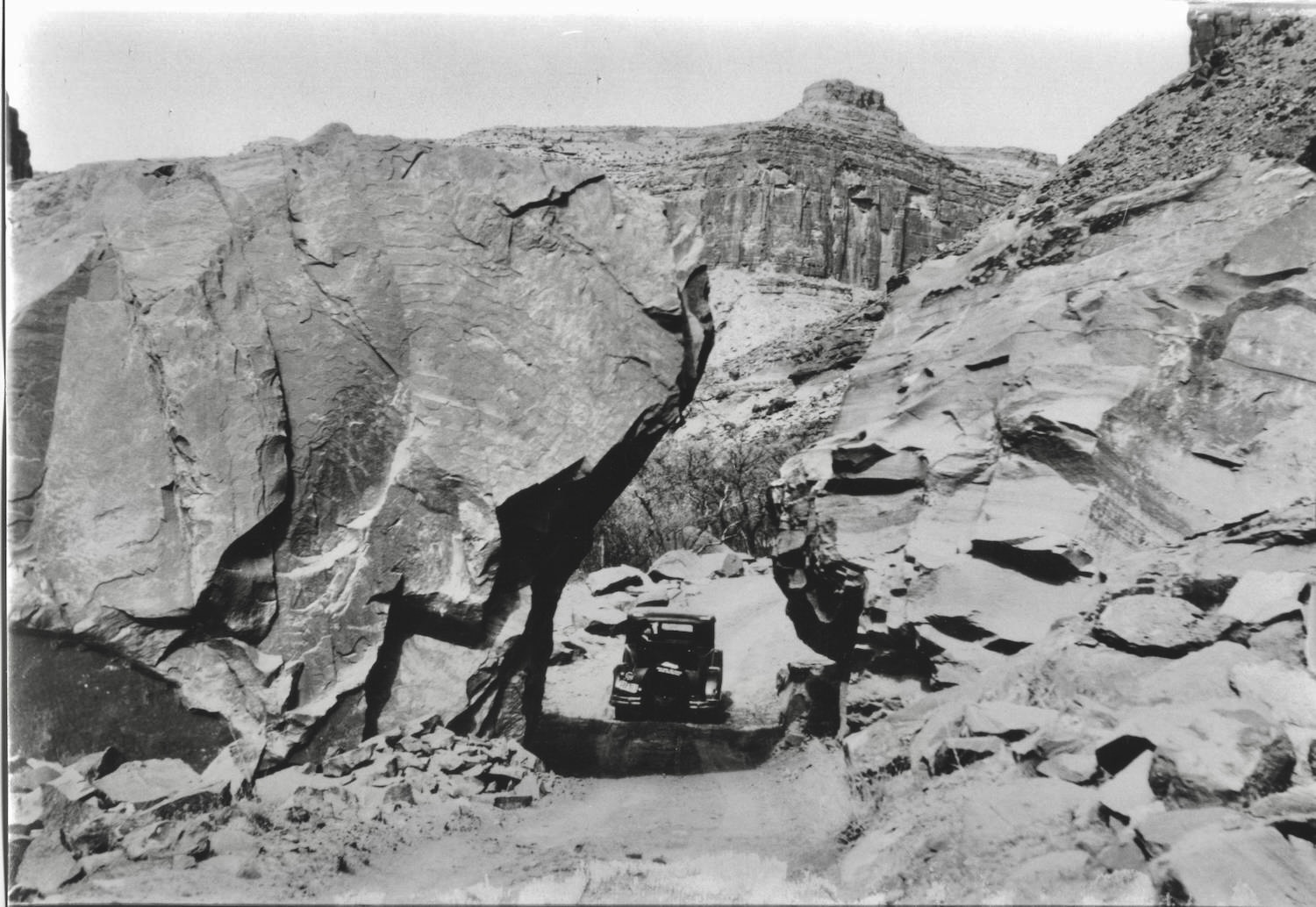Some information may be outdated.
Today, the trip from Moab to Castle Valley along the Colorado River is a scenic thirty-minute drive: smoothly paved with numerous recreational attractions along the way. Creating Utah 128, also known as the River Road, was a significant project over a century ago, and a major milestone in the county’s transportation infrastructure.
In the late 1800s, gold in the La Sal Mountains and upper Castle Valley lured prospectors to Miner’s Basin and Castleton. Moab began to see an influx of Euro-American settlers as well, developing into a small agricultural community.
However, due to the rugged landscape, traveling between Moab and Castle Valley took days. Travelers seeking to get from Moab to the mining and ranching settlements near today’s Castle Valley often traveled on horseback up through Grandstaff Canyon, overland over the fins and canyons of Sand Flats, and eventually down into Castle Valley via Pinhook Draw or the so-called “Heavenly Staircase,” a dramatically steep trail dropping over one thousand feet into Castle Valley.
Settlers were eager to make travel easier, connecting the remote communities to one another more effectively. In 1900, Grand County petitioned for a new road to be constructed along the Colorado River corridor. Early the following year, Captain Samuel King was allotted by the Grand County Commission one year to build this “Grand River Toll Road” along the south side of the river. King organized local laborers who used horse-powered equipment to carve a wagon road into the rugged, rocky landscape. King’s toll road was completed in 1902, making transportation for wagons and mule trains significantly easier.
In the 1920s, the road was rerouted to sit above the high water mark and the River Road was designated Utah 128 as part of the Federal Highways Act in 1921. The influx of automobiles promoted road improvements, eventually including paving the entire length of the roadway. In 1989, River Road was designated a Scenic Byway, and today it is both a popular tourist destination as well as remaining an integral thoroughfare connecting remote communities.
The Moab Museum is dedicated to sharing stories of the natural and human history of the Moab area. To explore more of Moab’s stories and artifacts, find out about upcoming programs, and become a Member, visit www.moabmuseum.org.
Appreciate the coverage? Help keep local news alive.
Chip in to support the Moab Sun News.





